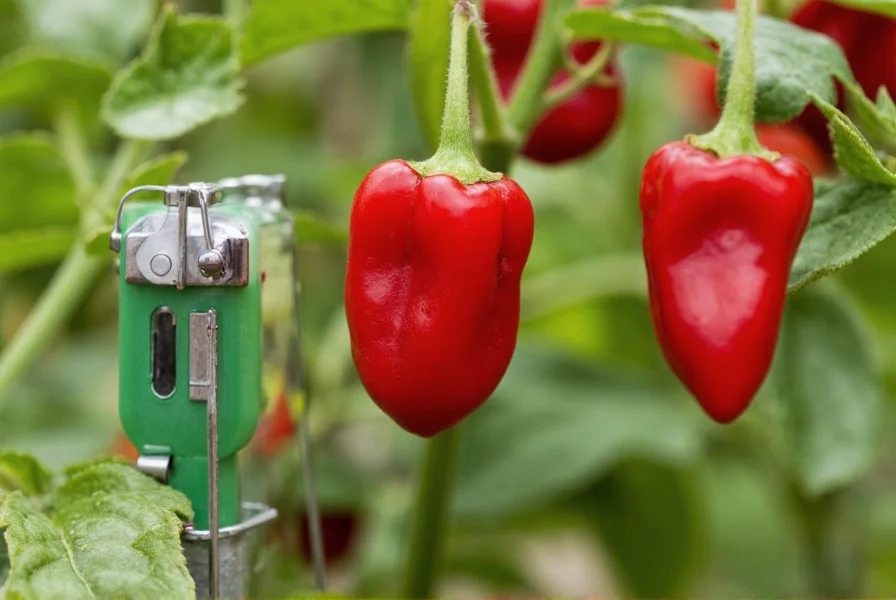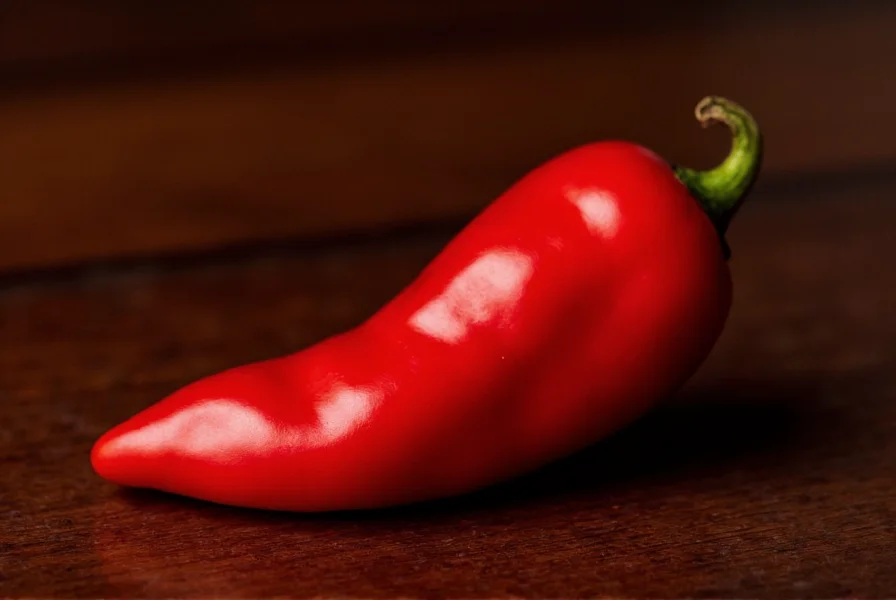The ghost pepper, scientifically known as Bhut Jolokia, earned its place in the record books when it was certified as the world's hottest chili pepper by Guinness World Records in 2007. Understanding its Scoville rating provides crucial context for culinary use, safety precautions, and appreciation of its unique position in the pepper hierarchy.
Understanding the Scoville Scale
Developed by pharmacist Wilbur Scoville in 1912, the Scoville Organoleptic Test originally measured heat through human taste panels diluting pepper extracts until the heat became undetectable. Today, high-performance liquid chromatography (HPLC) provides precise measurements of capsaicinoid concentration, which are then converted to Scoville Heat Units for consumer understanding.
Each Scoville unit represents one part capsaicin diluted in one million parts sugar-water solution. The ghost pepper's rating means its capsaicin would need to be diluted between 855,000 and over one million times before the heat becomes undetectable.
Ghost Pepper Heat Range Explained
The ghost pepper's Scoville range of 855,000-1,041,427 SHU isn't arbitrary—it reflects natural variation influenced by:
- Growing conditions: Soil composition, climate, and water stress affect capsaicin production
- Genetic variation: Different ghost pepper strains exhibit varying heat levels
- Ripeness: Fully mature red peppers typically measure hotter than green immature ones
- Plant position: Peppers growing on upper branches often develop higher heat concentrations
This natural variability explains why some ghost peppers may feel significantly hotter than others, even within the same batch.
| Pepper Variety | Scoville Heat Units | Heat Comparison |
|---|---|---|
| Bell Pepper | 0 SHU | 0 times hotter than bell pepper |
| Jalapeño | 2,500-8,000 SHU | 107-416 times hotter than jalapeño |
| Habanero | 100,000-350,000 SHU | 2.4-10.4 times hotter than habanero |
| Ghost Pepper | 855,000-1,041,427 SHU | Reference point |
| Carolina Reaper | 1,400,000-2,200,000 SHU | 1.3-2.6 times hotter than ghost pepper |

Practical Implications of Ghost Pepper Heat
Understanding the ghost pepper's Scoville rating isn't just academic—it has real-world consequences for handling and culinary use. At over 855,000 SHU, ghost peppers deliver heat that:
- Triggers immediate physiological responses including sweating, flushing, and increased heart rate
- Requires careful handling with gloves to prevent skin irritation
- Necessitates extreme caution around eyes and sensitive membranes
- Demands precise measurement in cooking—often just a small seed or fragment provides sufficient heat
- Creates flavor complexity beyond mere heat, with distinctive smoky, fruity notes
Chefs working with ghost peppers typically use them sparingly as accent ingredients rather than primary components. The heat builds gradually, reaching peak intensity after 30-45 seconds, and can last for 20-40 minutes before subsiding.
Safety Considerations for High-Scoville Peppers
Working with ghost peppers requires specific safety protocols:
- Always wear nitrile gloves when handling—latex provides insufficient protection
- Use eye protection to prevent accidental transfer to eyes
- Work in well-ventilated areas as capsaicin becomes airborne when cutting
- Have dairy products (milk, yogurt) readily available to neutralize heat
- Never use bare hands after handling before washing thoroughly
- Avoid inhaling fumes when cooking with ghost peppers
Emergency response for accidental exposure includes flushing with cool water for skin contact and consuming dairy products for oral exposure. Severe reactions may require medical attention, particularly for individuals with respiratory conditions.
Ghost Pepper in Culinary Context
Despite their formidable heat rating, ghost peppers have gained popularity in specialty cuisine for their complex flavor profile. When used judiciously, they contribute:
- Distinctive smoky undertones that enhance barbecue sauces
- Fruity notes that complement tropical fruit salsas
- Depth to curry blends without overwhelming other spices
- Unique heat progression that creates memorable eating experiences
Culinary professionals often recommend starting with 1/8 to 1/4 teaspoon of finely minced ghost pepper per dish for noticeable heat without overwhelming the palate. The pepper's heat integrates better when added early in the cooking process, allowing flavors to meld while slightly reducing raw heat intensity.

Measuring Pepper Heat: From Subjective to Scientific
The journey from Scoville's original taste test to modern laboratory analysis demonstrates significant advancements in pepper heat measurement. While the Scoville scale remains the consumer standard, HPLC testing provides objective measurements of individual capsaicinoids:
- Capsaicin: Primary heat compound (typically 50-75% of total capsaicinoids)
- Dihydrocapsaicin: Second major contributor (20-35%)
- Nordihydrocapsaicin: Minor component (5-10%)
- Homodihydrocapsaicin: Trace amounts
- Homocapsaicin: Trace amounts
This scientific approach explains why two peppers with identical Scoville ratings might produce different heat sensations—the specific capsaicinoid profile affects how the heat registers on the palate.
Ghost Pepper's Place in Pepper History
Native to Northeast India, ghost peppers (Bhut Jolokia meaning "ghost chile" in Assamese) were traditionally used for:
- Food preservation in humid climates
- Protection against food spoilage
- Traditional medicine applications
- Deterrent against elephants raiding crops
After gaining international attention through Scoville testing, ghost peppers sparked the current "superhot" pepper craze, inspiring breeders to develop even hotter varieties like the Carolina Reaper and Pepper X. However, ghost peppers remain popular for their balanced heat-to-flavor ratio compared to newer, more extreme varieties.











 浙公网安备
33010002000092号
浙公网安备
33010002000092号 浙B2-20120091-4
浙B2-20120091-4